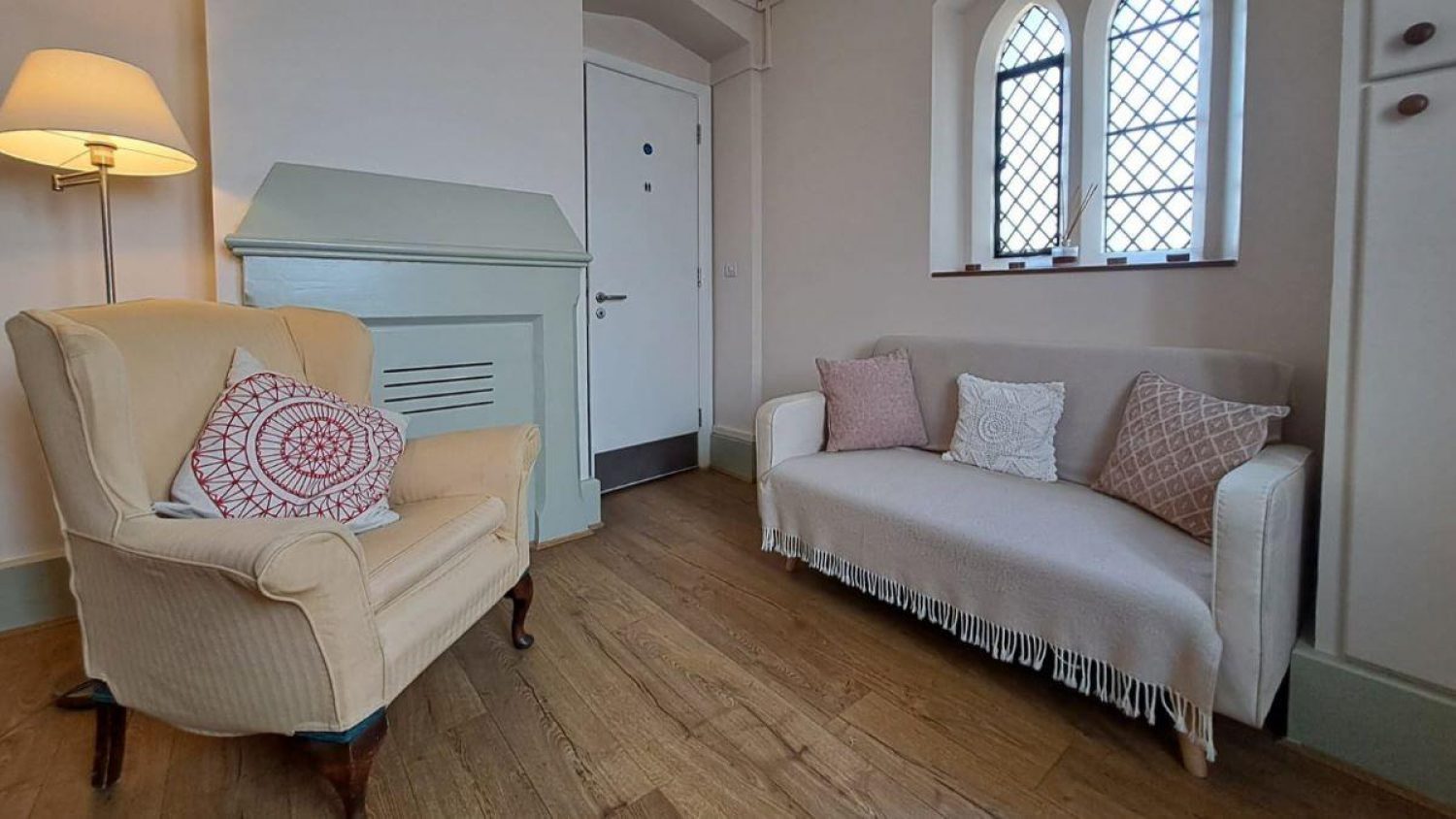Six minute read
Helping to dress someone close to you before their funeral can be a deeply meaningful and personal experience. For many of our clients, supported by the Poppy’s team, it can be a final act of love, a way of paying respects and an opportunity to say goodbye.
We can also dress someone for you — before a visit, for a funeral with an open coffin, or simply because you want to know they are well turned out in the clothes that are right for them.
In this blog, we answer all your questions about dressing someone in Poppy’s care.
Can I help dress my person at Poppy’s?
Absolutely, we encourage families and friends to be involved in any aspect of care that they would like to.
If you want to help dress your person, your funeral director will talk you through what to expect. Our mortuary team will be there with you on the day, supporting you and explaining every step.
It’s up to you whether you are hands-on or simply watching. You can also change your mind about how involved you’d like to be at any point.
In their own words: Read about clients’ experiences of dressing someone at Poppy’s. Hear from Katie about why finding the right shoes for her dad Vincent mattered so much to her, or from Monica and Rowena about dressing their brother in his smartest suit.
I’d like my person dressed, but I don’t want to dress them myself. Is this possible?
If you’d rather drop off clothes for our team to dress your person in, that’s totally fine too.
The clothes need to arrive with us at least 48 hours (two working days) before any visits or, if there are no visits planned, the same time before the funeral itself. This gives the Poppy’s team time to dress them with care.
In their own words: Jenny explains how the Poppy’s team dressed her mum according to Taoist Buddhist tradition.
What should I know before coming into Poppy’s to dress my person?
We’ll talk you through everything you need to know, so there shouldn’t be any surprises.
If you’ve cared for someone during an illness, you might be used to helping dress them or rolling them in their bed to change bedding or clothes. We might use slightly different techniques, but otherwise this is just the same.
You might expect someone’s body to feel stiff after they’ve died, but this isn’t usually the case. Our mortuary team will talk you through how your person looks and will guide you every step of the way.
Some family members or friends are surprised that we talk to people while we dress them, explaining what we’re doing and what’s happening. This is something which feels natural and is one way in which we show respect for the person and who they were in life.
If someone’s skin is particularly delicate, or their body is in a fragile condition, it could be that we advise choosing looser or darker-coloured clothing.
There can be occasions where we need to cut a piece of clothing in order to make it fit without causing any damage to the person. If we do need to cut the clothing, we will always talk to you about it in advance and will make sure that the cuts are not visible once the person is dressed.
How long does it take to dress somebody?
It depends on the type of clothes, as well as on the person and their condition. It can take as little as twenty minutes, or an hour or more. We would rather take our time than rush the process.
We always have at least two people involved in dressing a person, to make sure that when we lift or roll someone over that this is done safely and with care.
If you come in to dress your person, or to help us dress them, we’ll allow a couple of hours. This gives enough time for us to explain step-by-step what needs doing, and to take it steadily.
Dressing someone can be an emotional experience, so we want you have the time you need to say goodbye. If you need to pause or take a break at any point, that’s fine too.
Are there other ways I can be involved in caring for my person apart from dressing them?
Yes, you can ask us to wash someone’s hair, give them a shave, apply nail varnish or make-up, or spray on their signature perfume or aftershave. Having a photo of how they wore their make-up or hair is always helpful.
And, of course, you can help us with any of these things too. Clients tell us it’s especially meaningful when they do something that they used to do for the person while they were alive.
Once someone has died, their skin can become less absorbent, so we will always be careful when applying moisturiser or make-up — it is helpful to use the same make-up that the person used in life. We always go slowly and carefully so not to damage the person's skin.


